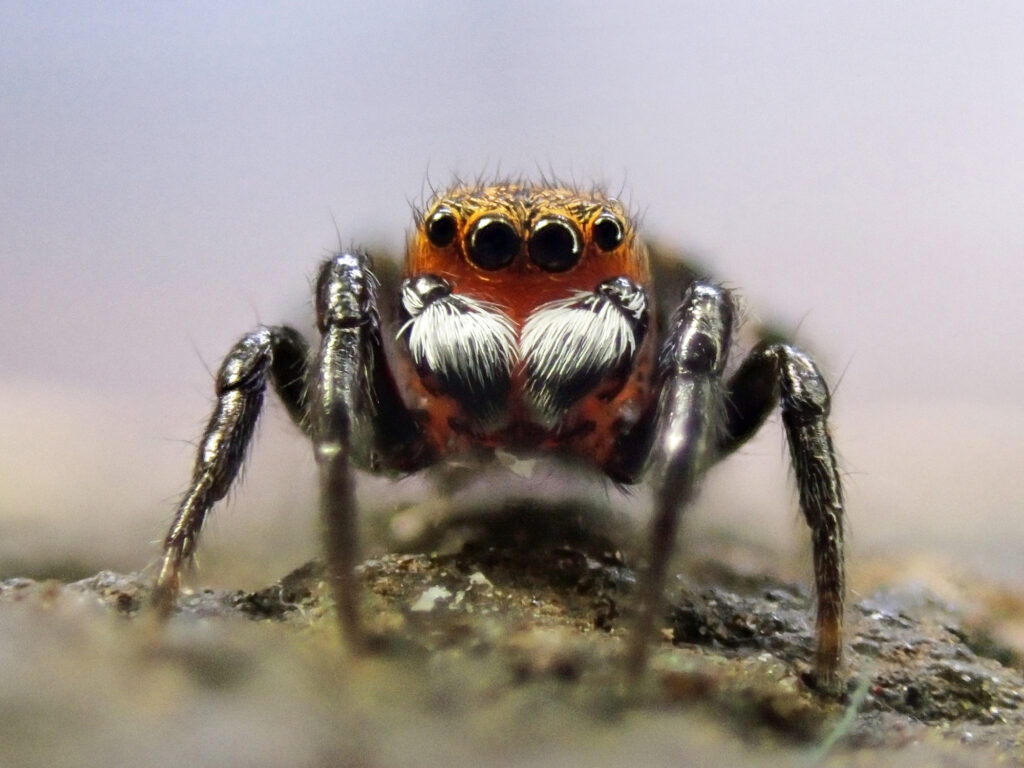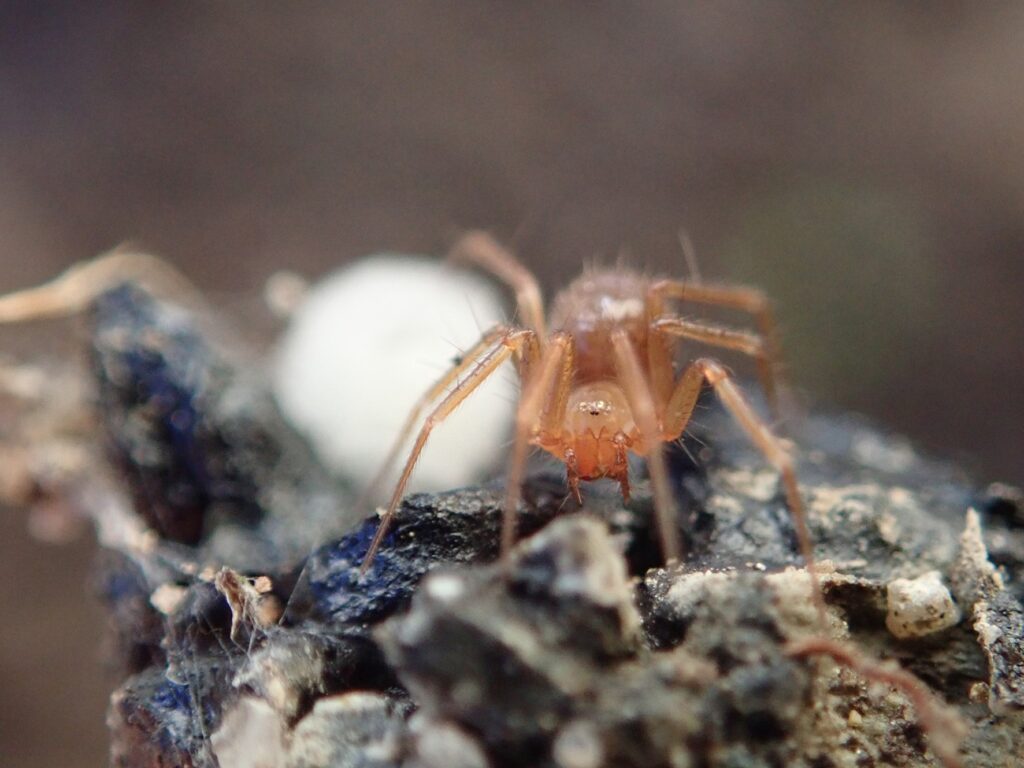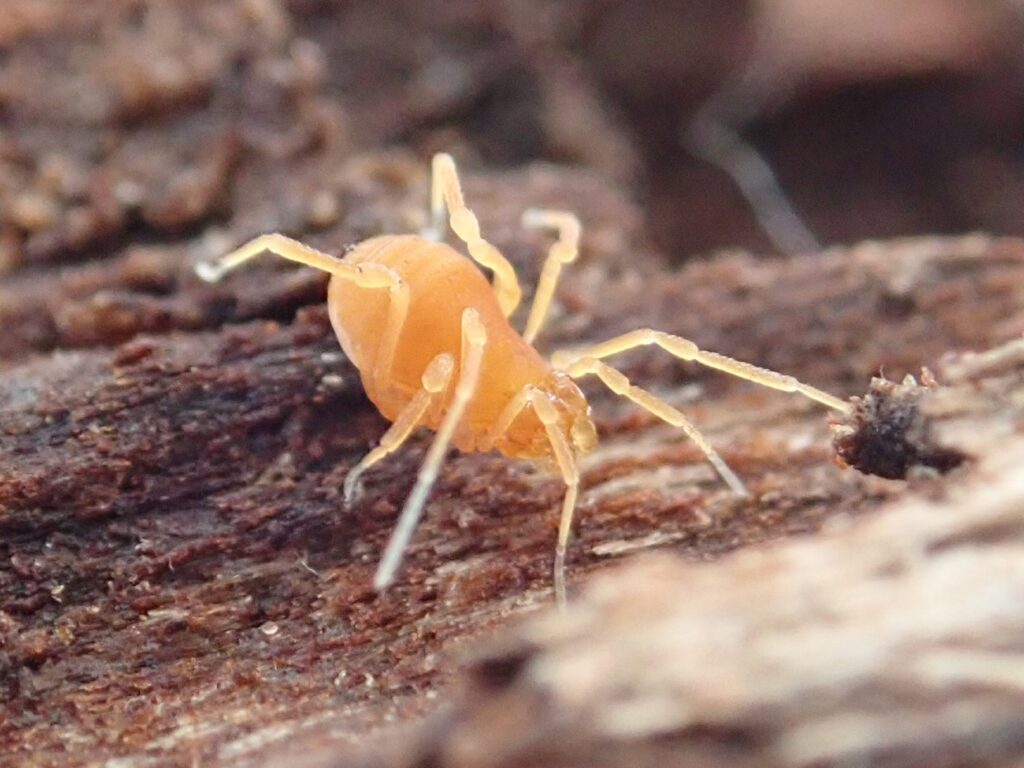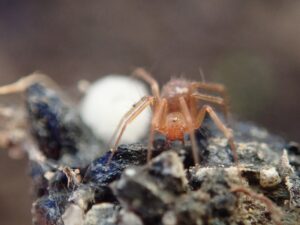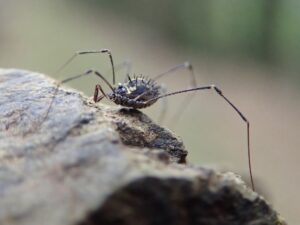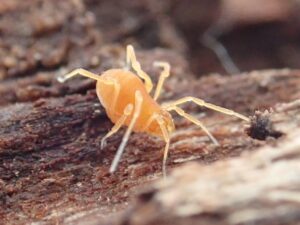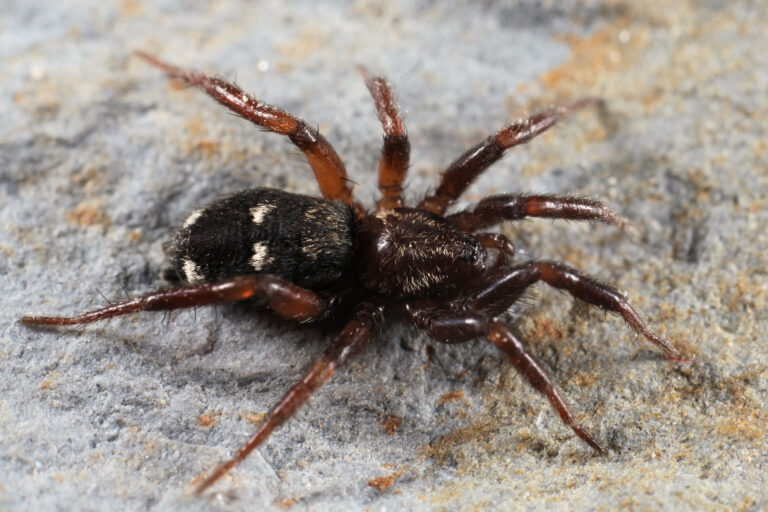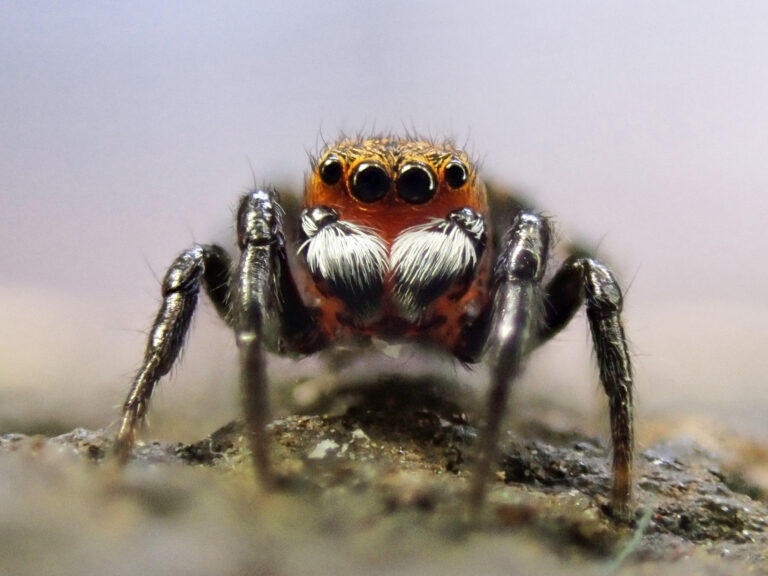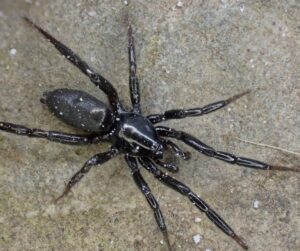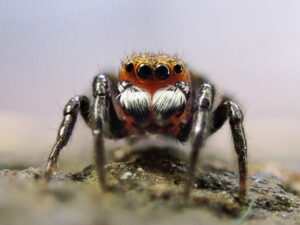Spiders and harvestmen are arachnids, an ancient group of creatures that date back more than 420 million years. Unlike insects, arachnids have four pairs of legs instead of three, simple rather than compound eyes, and no antennae or wings. Spiders differ from harvestmen by having two distinct body segments rather than one. Many species of spider produce silk, which they weave into webs to catch prey or use to build nests, protect their eggs and to get around.
Arachnids are an important food source for birds, mammals, amphibians and reptiles. As they eat insects they help control species which damage crops or spread disease.
Devon’s arachnids can be found almost everywhere, from the coast to high moorland, in gardens and in our homes. Numbers vary widely according to habitat, but it has been estimated that there can be up to 800 spiders per square metre in uncut grassland. They all need:
Food: Spiders are carnivores and mainly eat insects. Most harvestmen also eat insects but will eat plants and dead animals too.
Shelter: Spiders and harvestmen hide from predators and build their webs or nests under rocks, in trees, burrows or inside buildings. Although spiders do not technically hibernate, many species will go into a state of dormancy over winter. Many harvestmen die off over winter, with only their eggs surviving.
Currently around 680 species of spider and 30 harvestmen are found in the UK, and 235 of these have been recorded in Devon. 29 are Devon Species of Conservation Concern and of these 11 have been identified as Focus Species.

